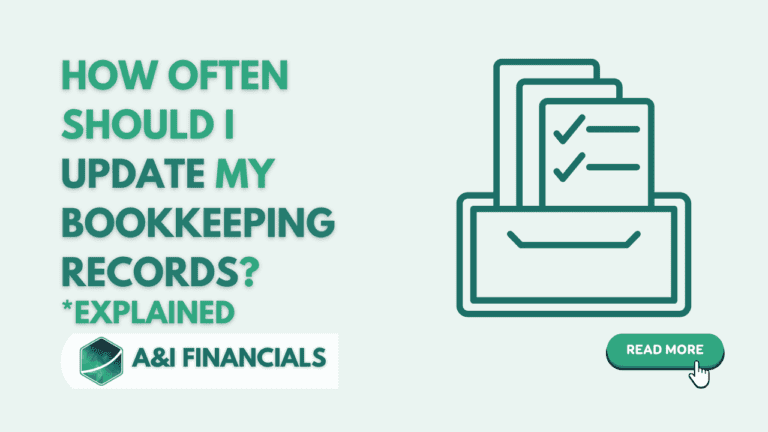Fast Four Bank Reconciliation: Effortless Financial Balance
Do you ever need help with the tedious task of reconciling your bank statements with your financial records? If you’re nodding your head, worry not! There’s a game-changing method that will revolutionize your financial balance process. Welcome to the world of Fast Four Bank Reconciliation, a powerful technique designed to streamline and expedite the reconciliation process like never before. In this article, we will walk you through the ins and outs of this method, explaining how it can transform your financial management in the blink of an eye.
Understanding Bank Reconciliation
Before we dive into the wonders of Fast Four Bank Reconciliation, let’s quickly recap what bank reconciliation is all about. Bank reconciliation is the process of matching your internal financial records with the transactions recorded by your bank. Both data sets align perfectly, leaving no room for error. It’s like assembling the puzzle pieces to form a complete and accurate financial picture.
The Arduous Traditional Reconciliation Process

Picture this: It’s the end of the month, and you’re faced with a stack of bank statements and financial records. The traditional reconciliation process involves the following:
- Tedious manual comparison
- Going through line by line.
- Meticulously mark each transaction as you cross-reference the data.
As a result, your financial statements could be more consistent and consume less valuable time. When discrepancies are discovered after hours of work, it can be highly frustrating.
Fast Four-Bank Reconciliation: A Game-Changing Solution
Enter the superhero of financial management: the Fast Four Bank Reconciliation method. Think of it as a finely tuned engine that effortlessly glides through the reconciliation process, making it feel like a breeze. This innovative approach slashes the time spent on reconciliation while maintaining unmatched precision. So, how does it work, and what sets it apart?
The Four Pillars of Fast Four Bank Reconciliation
Automation: The Key to Speed and Accuracy
Fast Four Bank Reconciliation harnesses the power of automation to streamline the process. Advanced algorithms and cutting-edge technology work in tandem to match your financial data automatically.
Real-Time Data Syncing: Say Goodbye to Delays
Gone are the days of waiting for your bank statements to arrive by mail or downloading them manually. Fast Four Bank Reconciliation integrates seamlessly with your financial institution, allowing real-time data syncing. Keeping your financial records up-to-date keeps you on your game and eliminates delays.
Intelligent Categorization: Organized and Efficient
Sorting through countless transactions can be overwhelming. The Fast Four method automatically categorizes your transactions into neat and organized groups. This categorization not only helps you make sense of your finances but also enables you to spot patterns and trends effortlessly.
Exception Handling: Identifying Discrepancies in a Snap
Fast Four Bank Reconciliation is designed to spot discrepancies with surgical precision. Instead of sifting through every transaction, the method pinpoints potential differences, allowing you to focus your attention where needed most. This targeted approach ensures that no stone is left unturned and that your financial records are in perfect harmony.
The Benefits: More Than Meets the Eye

So, we know that Fast Four Bank Reconciliation is fast, but what other benefits does it bring? Let’s explore the advantages that make it stand out from the competition:
Time Savings:
Time is money, and Fast Four Bank Reconciliation saves you loads of it. With automation and real-time syncing, you can say goodbye to the hours wasted on manual reconciliation.
Increased Accuracy:
The human mind is prone to error, but machines aren’t. By automating the process, you ensure that your financial statements are accurate down to the last penny.
Enhanced Efficiency:
With intelligent categorization and exception handling, you gain valuable insights into your financial data without drowning in a sea of transactions.
Improved Decision-Making:
With up-to-date and accurate financial information, you can make informed decisions for your business or personal finances.
Peace of Mind:
No more sleepless nights you are worrying about discrepancies. Fast Four Bank Reconciliation instills confidence in your financial data, allowing you to focus on what truly matters.
How to Implement Fast Four Bank Reconciliation
Now that you’re excited about the Fast Four method, let’s discuss how to implement it effectively:
Research and Choose the Right Software:
There are several Fast Four Bank Reconciliation software solutions available in the market. Do your research, read reviews, and choose the best suits your needs.
Integration with Your Financial Institution:
Ensure the software you select integrates seamlessly with your bank or financial institution. Real-time data syncing is a game-changer, so compatibility is crucial.
Data Security and Privacy:
Your financial data is sensitive and confidential. Ensure the software you choose adheres to high-security standards to protect your information.
Training and Familiarization:
Invest time in training yourself or your team on effectively using the Fast Four method. The more you familiarize yourself with the software, the more you’ll reap its benefits.
Conclusion
In conclusion, Fast Four Bank Reconciliation is a revolutionary approach that can significantly improve your financial management. By selecting the right software, prioritizing data security, and staying committed to practical implementation, you can harness the full potential of this method and enjoy its many advantages.
At A&I Financials, we specialize in providing expert guidance and support for Fast Four Bank Reconciliation implementation. Our crew of skilled professionals is ready to assist you through the process, from deciding on the ideal software program method to ensuring seamless integration with your present structures. Don’t let the burden of manual reconciliation weigh you down any longer; let us help you streamline your financial processes and achieve unprecedented efficiency.
Please do not hesitate to contact us to learn more about our services and how we can customize them to suit your requirements perfectly. You can schedule a consultation or request additional information by contacting us. Take the first step towards effortless financial balance with A&I Financials– your trusted partner in financial management.
We look forward to working with you and helping you unlock your business’s or personal finances’ full potential.
FAQS
Comparing and matching financial records with bank records is called bank reconciliation. It ensures that both data sets align, identifying any discrepancies or errors that must be corrected.
Bank reconciliation is crucial for maintaining accurate financial records. It helps identify errors, missing transactions, or fraudulent activities, ensuring that your financial statements reflect the actual state of your finances. Correct forms are essential for making informed business decisions and fulfilling tax and regulatory requirements.
Bank reconciliation should ideally be performed regularly, at least once a month. Some businesses need to reconcile more frequently, depending on the volume of transactions and the nature of their financial activities. Regular reconciliation ensures that discrepancies are identified and rectified promptly.
Discrepancies in bank reconciliation can arise from various sources, including:
Unrecorded transactions: Missed recording of checks, deposits, or other dealings in the financial records.
Bank processing delays: Transactions may take time to appear in the bank statement, leading to temporary discrepancies.
Errors: Mistakes in data entry, such as recording wrong amounts or incorrect dates.
Bank fees and interest: Due to timing differences, Bank charges and interest might not match the records.
Fraudulent activities: Unauthorized transactions or fraudulent withdrawals must be detected and investigated.






